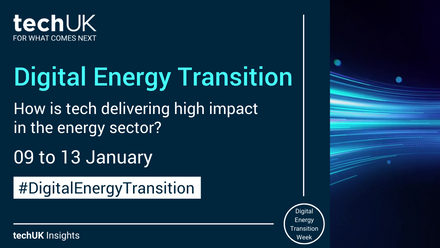The UK Energy Outlook: What data centre operators can expect from winter 2022/23 (Guest Blog from Kao Data)
[This Guest Blog was originally posted on Kaodata.com]
“The pessimist complains about the wind; the optimist expects it to change; the realist adjusts the sails.” William Arthur Ward
Since the start of the war in Ukraine on 24 February this year, European and UK energy prices have become unmanageably volatile. The instability of gas imports and the weaponisation of the gas pipelines from Russia, including the apparent sabotage of the Nord Stream pipelines, have had a massive knock-on impact to UK energy prices. A typical wholesale electricity price two years ago of around £40/MWh has reached levels ten to twenty times that depending on the month or season being purchased. This has led to government intervention in the form of the Energy Price Guarantee and Energy Bills Support Scheme for domestic customers and the Energy Bill Relief Scheme for businesses, as well as generating a renewed drive for energy efficiency. That said, while undoubtedly there has been demand reduction in both homes and businesses, clearly not every business is taking action if Garry Connolly’s recent post on LinkedIn was anything to go by, which showed London’s skyline completely illuminated at 8pm on a weekday evening during a perceived nationwide “energy crisis”.
In terms of the current situation, admittedly, in recent weeks short term prices have softened due to above average temperatures, injection of natural gas into storage and the presence of ships laden with liquified natural gas (LNG) lurking around European coastlines waiting to discharge at European terminals. However, for the harsher months of the winter, namely January and February, the fundamental market issues remain unchanged.
The UK is not as reliant on Russian gas as say Germany or Italy and last winter for example 70% of UK gas came from the UK continental shelf and Norway. In spite of that, a European shortage has a knock-on effect to the UK both in the ability to import gas through interconnectors and on the price levels. Gas remains an important fuel for power generation so electricity price correlation with gas is strong.
For the winter months ahead our electricity and gas network operators, National Grid Electricity System Operator (ESO) and National Grid, the National Transmission System (NTS) operator for gas, have well developed plans to ensure the lights stay on and the gas flows, even against such a challenging and changing backdrop. This winter, as they do every winter, they have modelled worst case scenarios to ensure even in the most extreme of circumstances the networks deliver energy to homes and businesses.
Under their most extreme scenario for maintaining the operation of the electricity network National Grid ESO may call upon a process called the Electricity Supply Emergency Code (ESEC), legislation that grants them “exceptional powers for controlling the sources and availability of energy.”
The ESEC is a well-established process and in the event of an emergency there are three levels of activity, in this order;
- UK Government appeals to the nation for voluntary restraint in electricity consumption;
- Directions to restrict the consumption of electricity by industry and commerce;
- Directions requiring rota disconnections and associated restrictions.
It’s that third point that has created concern this winter - especially to my friends and colleagues who work within the UK’s data centre industry. To use more common language, a rota disconnection is a blackout. Media reporting about the prospect of blackouts has been widespread but light on detail. Well respected national media including the FT, The Times, and Bloomberg, as well as digital and data centre industry media including The Register, Information Age, and ITPro have all carried stories about the potential for blackouts, and have reported confidential talks between data centre industry representatives and the Department for Digital, Media, Culture & Sport regarding continuity of supply and ‘stock-piling’ of diesel for back up generation in the event in of an electricity supply emergency. Personally, I’m disappointed that reporting of the winter outlook for energy has been poor, light on the facts, and focuses on a hugely unlikely worst-case scenario. It’s particularly frustrating to hear industry media reporting the risk of blackouts when in fact data centres will be protected.
The word blackout grabs a headline but in truth a cursory exploration of what it really means would show that the ESEC is an absolute last resort and rota disconnections are the second and third priorities under the ESEC. National Grid’s Chief Executive John Pettigrew has himself said that blackouts are unlikely. Pettigrew, in my opinion, has been widely misquoted as saying that we should prepare for blackouts between 4-7pm on the coldest evenings during January and February. He was talking about what might happen during a cold snap, and if gas supplies from Europe were restricted, which is essentially the worst-case scenario again. On top of that his comments were made two weeks ago, since when we’ve had nothing but above average seasonal temperatures allowing gas storage to be filled almost to capacity.
For there to be blackouts this winter we need to see one or more of the following; extremely low temperatures / another “Beast from the East”, insufficient supplies of gas, unusually low wind speeds for a prolonged period, catastrophic failure of electricity generation, gas storage emptied, and/or LNG diverted elsewhere.
While we’ve seen countless column inches in the media about blackouts and in my opinion tremendous negativity as we head into winter, it’s important to note that National Grid has never used the ESEC process, even in extreme circumstances. In 2018, the “Beast from the East”, a blast of cold air from Siberia, crossed the North Sea, picking up water on the way, and dropped it on the UK as snow, dragging UK temperatures as low as -12℃ in rural areas. On 1 March 2018, one of the coldest days in the UK since records began, and the highest gas demand day in seven years, National Grid (NTS) issued a Gas Deficit Warning, “drawing attention to the supply and demand imbalance and to encourage market participants to take action.” While the situation was challenging and National Grid drew upon gas storage, imported LNG, and imported gas across the interconnectors, the network wasn’t compromised. At the same time on the electricity network margins were maintained and supply wasn’t compromised, helped by the cold snap bringing with it healthy wind speeds. That’s right, a cold snap can actually be positive from an electricity perspective if the cold is accompanied by strong winds.
What are the prospects for a cold snap this winter? Impossible to say really. Weather forecasts are about 80% reliable for a seven-day period but 10 days or longer and it drops to 50%. As a result the winter preparations are all based around a series of scenarios. What we do know right now is that for November conditions are expected to remain unsettled, predominantly wet and windy with mild temperatures. Towards the end of the month higher pressure will bring the potential for overnight frost, and it will generally be drier and cooler, but there is no immediate cause for concern.
Alongside its everyday actions National Grid has taken further steps to prepare for this winter. One of the enhanced actions is the ability to use the Demand Flexibility Service, where end users either reduce consumption or increase generation to help keep the system whole. Perhaps the most significant enhanced action is the contracting of coal-fired generating plant previously due to close. Five units of three power stations totalling 2GW of capacity have been contracted for winter contingency. Two units of 400MW each at West Burton A, two units of 570MW each at Drax, and one 480MW unit at Ratcliffe have been contracted exclusively for winter contingency from October 2022 to March 2023 at a cost of up to £395m. Importantly these units are not open to the market, they will be despatched only at the request of National Grid ESO. Calling upon coal plant feels like a very regressive step in our national efforts to decarbonise but it’s a necessary precaution in the circumstances.
There is positive news from a gas perspective too with Centrica recently announcing on 28 October 2022 that it will be reopening its Rough gas storage facility which increases total UK gas storage capacity by 50%. The facility has been closed for five years but engineering upgrades have allowed it to reopen at 20% of previous capacity for this winter.
National Grid ESO have clearly stated that, “Our central view remains, as set out in the Base Case, that there will be adequate margins (3.7GW / 6.3%) through the winter to ensure Great Britain remains within the reliability standard, although we expect there to be days where we will need to utilise many of the tools in our operational toolkit, including use of system notices.” National Grid ESO goes on to say, “Given the scale of uncertainty and risks associated with the current geopolitical situation we have developed a range of new tools, including publishing an early view of winter to help the market understand risks, contracting to retain approximately 2GW of coal fired generation that would otherwise have closed, and introducing an innovative Demand Flexibility Service to incentivise customers to reduce consumption at periods when margins are tight.” The Base Case assumes that capacity across all providers is available in line with commitments secured under the Capacity Market.
Their counterparts in National Grid NTS say, “In the unlikely event there is insufficient gas supply available in GB to meet demand, and should the market be unable to resolve the resultant imbalance, we have the tools required to ensure the safety and integrity of the gas system in the event of a Gas Supply Emergency. All possible measures would be taken to minimise the extent to which we use these tools. This is likely to be a challenging winter for energy supply throughout Europe. Factors beyond our control such as the weather, the potential for a shortfall of gas supplies within continental Europe and the wholesale cost of gas will all influence the prevailing gas supply and demand situation in Great Britain.”
What does this all mean for the UK’s data centre community? Again, it comes down to the detail of the long-standing emergency arrangements and in particular how sites will be protected if the ESEC is called upon. Certain sites will have their supplies of electricity protected if they constitute a national or regional critical need or if there is the potential for catastrophic damage to high value equipment. The ESEC goes even further and lists Approved Designated Services and these include “Digital and telecommunication services where there is a national need for continued operation” and crucially, that means data centres. Protected sites will still be asked to reduce consumption as far as is reasonably practicable to make a contribution but continuity of supply to data centres will be maintained as they are designated as critical national infrastructure. Other Approved Designated Services are oil refineries, continuous manufacturing processes, major airports, ports and docks, essential water and sewerage operations, essential food manufacturing and distribution operations, hospitals and healthcare settings, emergency services, armed forces, and financial services. If a business sits outside those categories and that includes non-essential retail and non-essential manufacturing, then they will be required to reduce consumption well before a hospital, military base or data centre is required to turn down.
Our system operators have robust plans in place, they have modelled very challenging scenarios and planned for them, they have evidenced experience and capability at keeping the system whole, they have additional tools and contracts for this winter, gas storage is almost full, LNG supply seems stable for now, and Rough has been reopened. There are plenty of reasons to feel reassured by the preparations taken by the system operators rather than to feel alarmed by the blackouts predicted by click-baiting articles issued by the press and media.
Wayne Mitchell

Wayne Mitchell has 25 years experience in the energy business across coal, gas and renewable electricity, spending the last 14 years with E.ON and npower, and is now working independently. Most recently Wayne was the Director of Corporate & Strategic, and one of the senior leadership team of the industrial and commercial division of E.ON UK, and was responsible for all major clients across electricity, gas, export, and metering.







